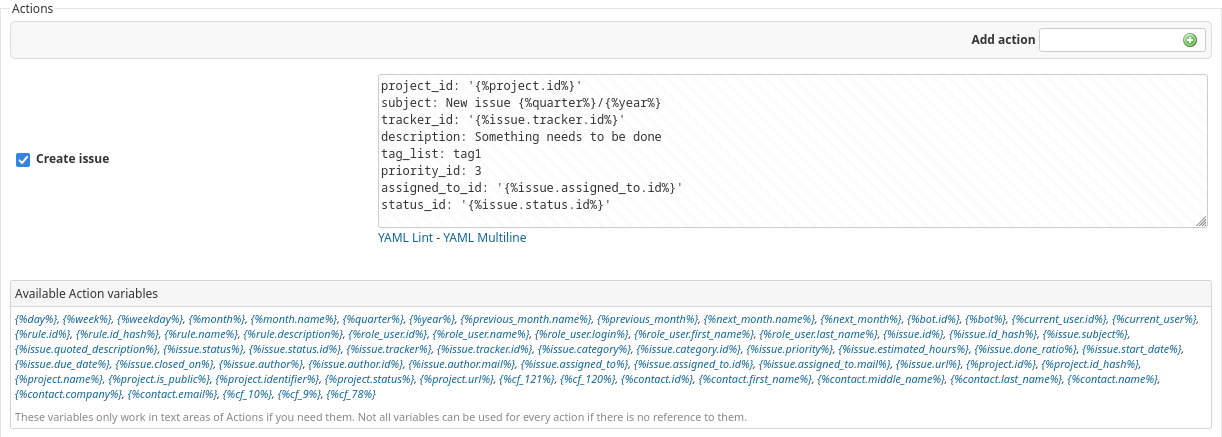Repeatedly creating tasks can be time-consuming. Fortunately, one of our products provides two ways to automate the creation of new issues in Redmine. Find out how it works.
Option 1: No-code automation via issue repeats
Using automatic issue repetition in Redmine is a great and easy way to create new issues based on a template.
This function does not require any developer knowledge. Users with the necessary role permission can simply do this based on time interval assignment.
We recently published an article on this procedure in our blog. Read: Automate time-critical tasks in Redmine using issue repeats
Option 2: Low-code automation via YAML
Advanced users with YAML skills have the possibility to perform more complex automations. For this purpose, a new rule (time-controlled or event-based) is created and the action Create issue is then used based on the defined conditions.
The automatic creation of a new issue is more complex because every Redmine configuration is individual. For example, there are differences in the required mandatory fields, trackers, status information, custom fields, project members etc.
For this reason, such complex automation can only be created by someone who has direct insight into the Redmine configuration.
Here is a simple example of what such an automation could look like.
Requirements: What should be done?
When tickets are created automatically, the same conditions are checked for new issues as when tickets are created manually. If certain requirements are missing, these must be filled in. Otherwise, a new issue will not be created.
In order to create a new issue the following minimum requirements must be met like:
Mandatory fields
Check, which fields for new issues are mandatory fields and set the necessary specifications in your YAML field. In our example this are the following fields:
| Field | Form parameter |
| Project | project_id |
| Tracker | tracker_id |
| Subject | subject |
| Description | description |
| Status | status_id |
| Priority | priority_id |
| Assignee | assigned_to_id |
We use variables in our example to make sure the default settings for assignee or status are set.
Additional informations
Are any additional information required? If so, make sure, they are also integrated in your YAML file.
In our example we want some additional information like: certain tags.
What else?
Once you know which fields you need to enter as a minimum in the YAML field, you need to check the following:
- Are the fields also active in the desired projects?
- Are the field selections also possible in the desired projects?
- Are the users in the desired projects also assigned as members?
If there are no obvious restrictions in the respective projects, the issue will be created accordingly. Here is an example code how this could look like:

You can find out more about the use of YAML at YAML.org. As a rule, most of the form parameters of the Redmine API can be used, which are also used for creating new issues via the API. Interesting facts about the Automation plugin in our FAQ.
